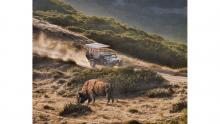Recommended!
12 Aug 2024
Nestled off the coast of Southern California, Catalina Island is a treasure trove of natural beauty, offering visitors a serene escape from the hustle and bustle of city life. While its pristine beaches, crystal-clear waters, and charming towns attract many, one of the most unique...





